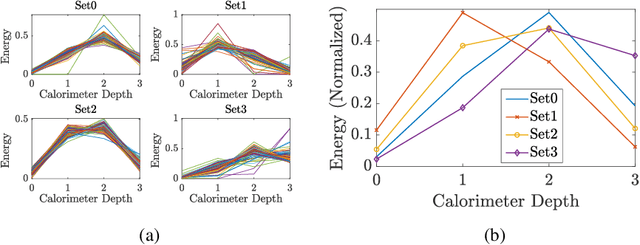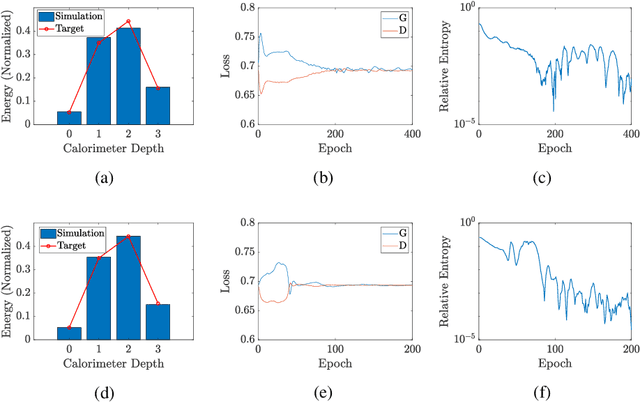Ross Duncan
University of Strathclyde, Glasgow, UK
Dual-Parameterized Quantum Circuit GAN Model in High Energy Physics
Mar 29, 2021



Abstract:Generative models, and Generative Adversarial Networks (GAN) in particular, are being studied as possible alternatives to Monte Carlo simulations. It has been proposed that, in certain circumstances, simulation using GANs can be sped-up by using quantum GANs (qGANs). We present a new design of qGAN, the dual-Parameterized Quantum Circuit(PQC) GAN, which consists of a classical discriminator and two quantum generators which take the form of PQCs. The first PQC learns a probability distribution over N-pixel images, while the second generates normalized pixel intensities of an individual image for each PQC input. With a view to HEP applications, we evaluated the dual-PQC architecture on the task of imitating calorimeter outputs, translated into pixelated images. The results demonstrate that the model can reproduce a fixed number of images with a reduced size as well as their probability distribution and we anticipate it should allow us to scale up to real calorimeter outputs.
Optimising Clifford Circuits with Quantomatic
Jan 29, 2019



Abstract:We present a system of equations between Clifford circuits, all derivable in the ZX-calculus, and formalised as rewrite rules in the Quantomatic proof assistant. By combining these rules with some non-trivial simplification procedures defined in the Quantomatic tactic language, we demonstrate the use of Quantomatic as a circuit optimisation tool. We prove that the system always reduces Clifford circuits of one or two qubits to their minimal form, and give numerical results demonstrating its performance on larger Clifford circuits.
* In Proceedings QPL 2018, arXiv:1901.09476
Verifying the Steane code with Quantomatic
Dec 30, 2014



Abstract:In this paper we give a partially mechanized proof of the correctness of Steane's 7-qubit error correcting code, using the tool Quantomatic. To the best of our knowledge, this represents the largest and most complicated verification task yet carried out using Quantomatic.
* In Proceedings QPL 2013, arXiv:1412.7917
Graphical Reasoning in Compact Closed Categories for Quantum Computation
Feb 03, 2009



Abstract:Compact closed categories provide a foundational formalism for a variety of important domains, including quantum computation. These categories have a natural visualisation as a form of graphs. We present a formalism for equational reasoning about such graphs and develop this into a generic proof system with a fixed logical kernel for equational reasoning about compact closed categories. Automating this reasoning process is motivated by the slow and error prone nature of manual graph manipulation. A salient feature of our system is that it provides a formal and declarative account of derived results that can include `ellipses'-style notation. We illustrate the framework by instantiating it for a graphical language of quantum computation and show how this can be used to perform symbolic computation.
 Add to Chrome
Add to Chrome Add to Firefox
Add to Firefox Add to Edge
Add to Edge